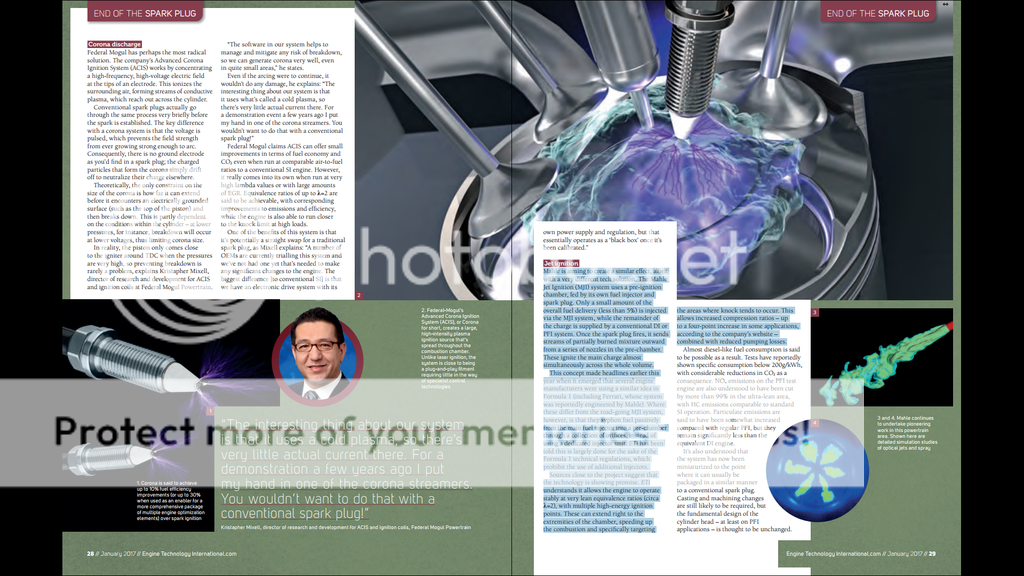Sorry guys, the screenshot was taken at 1920x1080 resolution, it got downsampled either through the image hosting site or the forum software. Here's the text of interest:
Mahle is aiming to create a similar effect, albeit
with a very different tech solution. The Mahle
Jet Ignition (MJI) system uses a pre-ignition
chamber, fed by its own fuel injector and
spark plug. Only a small amount of the
overall fuel delivery (less than 5%) is injected
via the MJI system, while the remainder of
the charge is supplied by a conventional DI or
PFI system. Once the spark plug fires, it sends
streams of partially burned mixture outward
from a series of nozzles in the pre-chamber.
These ignite the main charge almost
simultaneously across the whole volume.
This concept made headlines earlier this
year when it emerged that several engine
manufacturers were using a similar idea in
Formula 1 (including Ferrari, whose system
was reportedly engineered by Mahle). Where
these differ from the road-going MJI system,
however, is that they syphon fuel passively
from the main fuel injector into a pre-chamber
through a collection of orifices, instead of
using a dedicated injector unit. ETi has been
told this is largely done for the sake of the
Formula 1 technical regulations, which
prohibit the use of additional injectors.
Sources close to the project suggest that
the technology is showing promise. ETi
understands it allows the engine to operate
stably at very lean equivalence ratios (circa
λ=2), with multiple high-energy ignition
points. These can extend right to the
extremities of the chamber, speeding up
the combustion and specifically targeting
the areas where knock tends to occur. This
allows increased compression ratios – up
to a four-point increase in some applications,
according to the company’s website –
combined with reduced pumping losses.
Almost diesel-like fuel consumption is said
to be possible as a result. Tests have reportedly
shown specific consumption below 200g/kWh,
with considerable reductions in CO2as a
consequence. NOxemissions on the PFI test
engine are also understood to have been cut
by more than 99% in the ultra-lean area,
with HC emissions comparable to standard
SI operation. Particulate emissions are
said to have been somewhat increased
compared with regular PFI, but they
remain significantly less than the
equivalent DI engine.
It’s also understood that
the system has now been
miniaturized to the point
where it can usually be
packaged in a similar manner
to a conventional spark plug.
Casting and machining changes
are still likely to be required, but
the fundamental design of the
cylinder head – at least on PFI
applications – is thought to be unchanged.


















